The Best Depth to Fish for Bass: 4 Things to Know
Share this article with every angler you know!
When you first started fishing, you probably didn’t think about depth too much. You just chucked a lure into the lake, dragged it around, and hoped something swam by as you pulled it along. Hopefully, you’ve learned a bit since that phase, and you understand just how important depth is for any type of fishing. It’s one of the bigger factors that play into your growth as an angler.
However, even if you know that the fish tend to hang out at various depths, you might still be struggling to figure out why they do that or what the best depth is.
Today, we’re going to go over why depth is important, a few key points you need to know about “the best depth” to fish for bass, and 4 helpful techniques that will affect your choice of depth while fishing.
Get notified of new bass fishing articles, tips and tricks!
Newsletter Signup
Why is Depth Important When Bass Fishing?
Like we said earlier, some of you have probably already figured out that depth is important. However, here’s a brief rundown of a few facts for those of you who are just getting started and more or less just care that your lure is in the water at all.
The wildlife inside of a lake is a lot like your own neighborhood.
When it’s sunny and beautiful outside, you tend to see your neighbors outside, running around the local park, walking their dogs, and doing other activities. When it’s raining, everyone takes cover in their homes. If there’s snow, they’re probably not jogging around, and if anyone is outside, they’re typically sluggish trying to stay warm.
Fish are the same way. While they live in a body of water, the water isn’t all in the same state at the same time. Heat radiates through it at different levels based on several factors.
Because of this, fish move throughout the water column as their needs demand it. They seek “shelter” in warmer or cooler parts depending on the weather or where the food is, and you have to adapt your strategy to that.
This means that there really isn’t a “best depth”. You can’t just load your tackle box up with jerk baits that dive five feet and expect to constantly nab fish.
We’ll be taking this into account throughout this guide, and you’ll notice that the best depth varies dramatically based on various conditions.
Take Temperature into Account
This is the big difference maker. There are other factors we’ll talk about later, but the temperature is what largely determines where the fish are. It also affects their general behaviors, but we’ll focus on the depth, today.
1: Ideal Fishing Temperature
When it’s a solid 70 degrees outside, sunny, and basically the perfect fishing day, the best depth is likely going to be around 15 feet, or between the top and middle of the water column.
During these optimal conditions, the fish are active, they’re looking for food, and they’re taking in the great weather just like you are. Between the top and middle of the water column, which is typically between 10 and 15 feet, but changes according to the depth of the lake you’re fishing in, is where you’ll find bass under ideal weather conditions.
2: Extreme Heat
Unfortunately, during the same seasons when bass are experiencing optimal temperatures, there tend to be heat waves that easily exceed 70 degrees, and the bass tend to behave differently.
During these periods, you can find them in the same areas as they would be during optimal periods, but when the heat really cranks up, expect them to drop to 20 feet. This is the middle to lower section of the water column in most lakes.
Bass do this to escape the heat. They’ll simply suspend in the depths to get away from the hotter temperatures near the surface.
3: Cool Weather
In the fall, when the bass are suddenly shocked by temperature shifts, they tend to stay at the top of the column. This is because the sun is still out regularly, and they stay near the top to soak in as much sunlight and warmth as possible. They’ll also start packing on pounds to weather the stark winter months.
4: Freezing Cold
Finally, when the weather takes a turn for the worse, the bass go deep. They can reach depths of 20 feet in an average lake most of the time.
This is because something interesting happens to the water.
Pockets of warmth are created lower in the water column, and the surface gets cold. This is even more true when the surface is starting to freeze over.
You’ll rarely nab a bass near the surface in the winter unless it’s a particularly warm day or another factor draws them up closer to the top of the column.
The Location of Food Varies
This tends to go hand-in-hand with the general temperature, but food supplies can shift on their own, too. This will change where the bass decide to sit in the column.
1: Crawfish Maturation
Toward the end of summer, but before the end of fall, the crawfish start to get big, full of meat, and ready to eat.
During this time, bass in crawfish-filled lakes, ponds, and streams, will feast on them. This is why bright-red, crawfish pattern lures tend to be highly effective around that time of year.
Crawfish mostly stay at the bottom of the water, and that’s where you’ll find the bass when they’re feeding on them.
This doesn’t mean they’re at the deepest parts of the lake, though. You can often catch them grabbing crawfish off the bottom of the shallower portions of the water, as well. This goes hand-in-hand with them being within 10 feet of the surface in most lakes.
2: Bugs Swarm Before Storms
As long as it’s not the dead of winter, keep an eye on the weather.
Before it storms, the barometric pressure drops considerably. Bugs start to swarm the surface of the water, and it turns the entire lake into a feeding frenzy.
Even when you’d expect fish to be suspended or doing something else due to the general weather, right before a storm hits, and as it starts, bass will be right at the surface of the water to grab a quick bite. They'll either target the bugs hovering over the surface, or they’ll get the baitfish that are there for the same reason.
Adjust your lure choice accordingly to match these food opportunities, and make sure you’re bringing it in fast and toward the surface.
3: Feeding Time for Baitfish
If you can see the baitfish swimming around the edge of the banks along the weeds and structures, the bass are following suit.
Bass might want to be in a specific part of the water column, but it’s generally a good rule of thumb that they’ll follow the baitfish to grab an easy meal.
Spawning Time is Complex
When bass spawn, you won’t need to search the water column very much. They build a bed, lay their eggs, and stay suspended on top of that bed until the eggs hatch. Typically, they won’t even go more than a few inches away from their bed even if you’re harassing them with a lure.
This makes fishing the spawn difficult but rewarding because it puts all the big fish in one spot, and you more or less know where they’re at.
There aren’t a lot of considerations for us to list here. You mostly want to do your research and learn when the spawn starts and ends in your local area. It can change depending on the region due to your local weather patterns.
A lot of the time, you can use a bottom lure and skim it right over their beds to trigger their protective instincts. There isn’t much depth-finding necessary in this situation.
Lake Depth Matters
Finally, the best depth to fish for bass depends on the depth of the lake itself. We can list estimated depths for you to target based on the temperature, but if you’re only fishing in a 5-foot manmade lake, you obviously can’t fish at 10-feet in the fall or 15-feet in the summer.
You have to be aware of the lake's overall depth. No matter what the depth is, there is a water column, and the general measurements, such as at the surface, in the middle, and along the bottom, are all still relevant.
In super shallow waters, you might need to rely more on the presence of structures. With a lack of substantial depth to hide in from the heat, bass might take up positions in shaded areas with lots of vegetation to keep them cool.
Being able to read the water and adjust accordingly is a skill every angler needs. Whether you’re talking about depth, clarity, temperature, season, or any other factor. Fishing is constantly changing year-round and based on the location you’re at.
Take time to identify the various characteristics of your area, and fish accordingly; regardless of any hard measurements or recommendations you read in a guide.
Determining Depth and Other Circumstances
So, now that you know why depth is important, what you should aim for in various situations, and more, how do you actually determine the depth you’re fishing at or that you’re actually staying in that part of the water column? There are a few ways.
1: Use a Depth Finder/Sonar System
This is the easiest and most surefire way to determine the depth of the water you’re fishing in. If you’re on the bank, use a castable sonar unit. They float around like a bobber, scan the water within a certain range, and relay a readout to your phone or a handheld unit. If you're in a boat, your onboard systems work just fine.
Obviously, this requires a hefty financial investment. Even castable units tend to cost $100 or more, and you risk losing the sonar unit if your line snaps on the cast or on the way back in. On-board units can cost hundreds or even thousands.
Don’t worry. We’re not just telling you to buy a bunch of expensive gear.
2: Use a Slip Bobber
If you don’t have a depth finder, you can also attach a slip bobber, put a stopper at a set maximum depth, and tie a weight on the end. For example, if you set the stopper at 20 feet, and the bobber starts floating halfway down the line, you know the bottom is about 10 feet. If the bobber slaps the stopper and disappears, the bottom is beyond your maximum depth setting.
This isn’t precise, but it is a decent way to find the depth when you don’t have the tech on your side. You can then set all your rigs to fish at the depth you’re looking to fish at.
3: Use a Bobber or Depth-Rated Lure
There are two main ways you can control your depth if you don’t have the skill developed to do so with your retrieval speed.
First, you can use a bobber. As long as your lure isn’t particularly heavy, a standard bobber can keep it from falling to the bottom. That way, even if you stop your retrieval for a while, the lure just hangs in the water column. The downside is you lose a lot of the sensitivity you would otherwise feel in your line when it comes to getting bites. The bobber stops the momentum of the pull, and it’s hard to see if it’s alerting you to a bite when you’re reeling it in.
Then, you can simply use a lure that is designed to stay at a certain depth. A lot of lipped crankbaits and jerk baits are made this way. As long as you reel appropriately, they’ll dive to their intended depth and stay there until you stop.
4: Use an App
Finally, you can figure out the best depth to fish for bass, all the weather information you need, and even tips from other fishermen by simply downloading the Bass Forecast Fishing App. You still want some skills of your own, but BassForecast puts all of this necessary information in the palm of your hand.


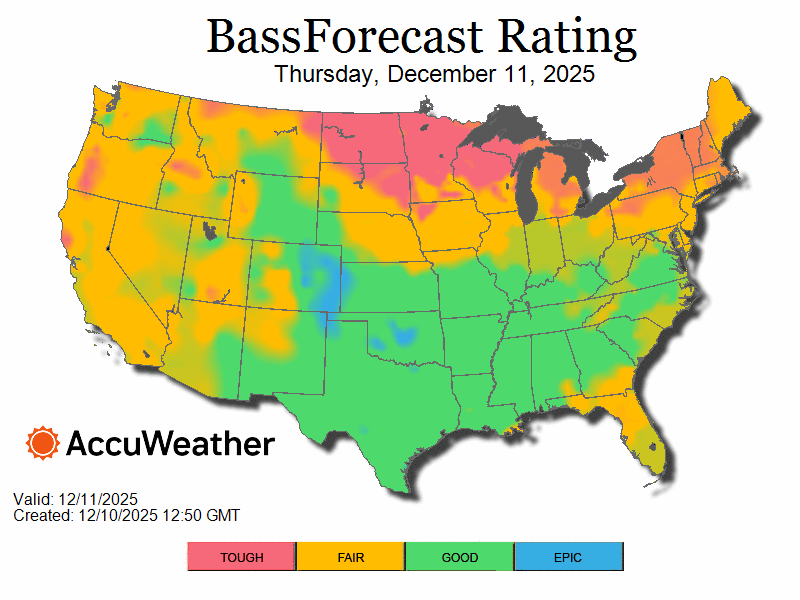

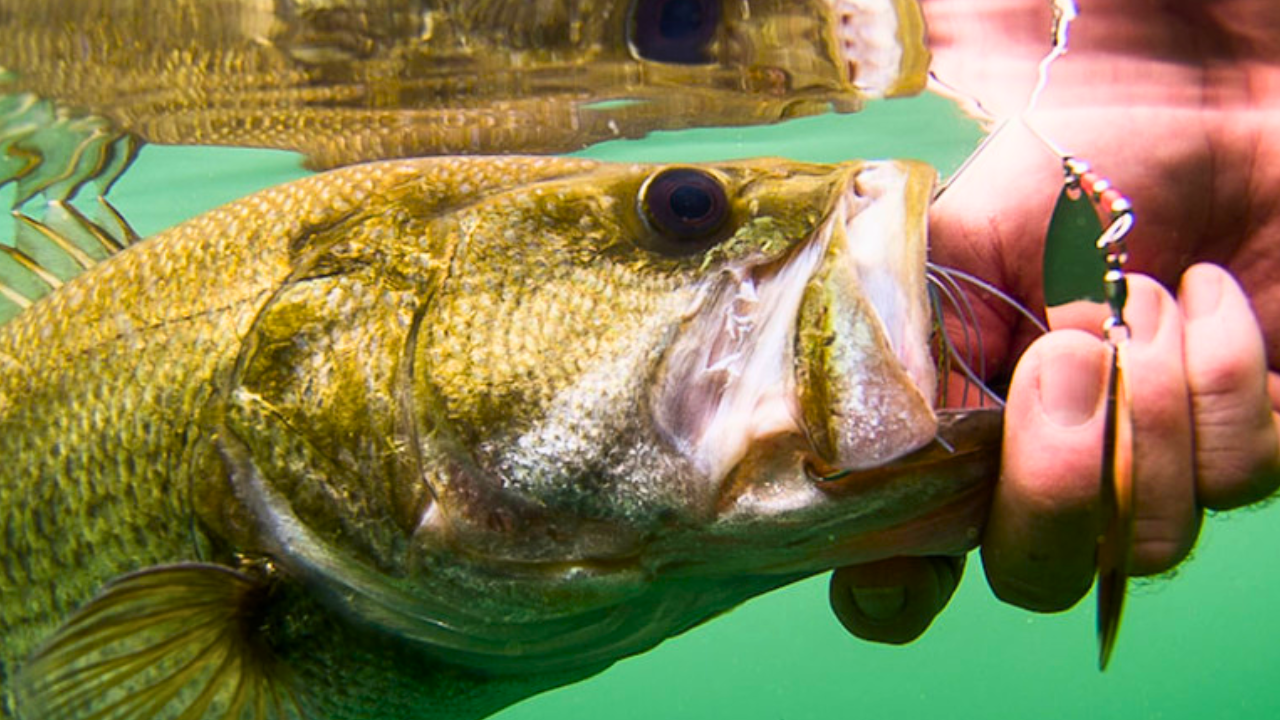

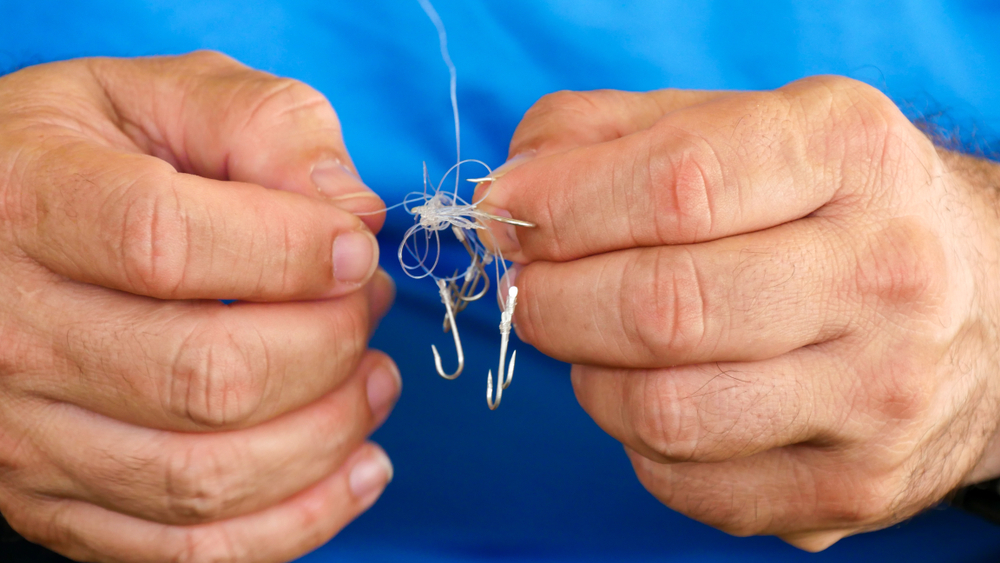
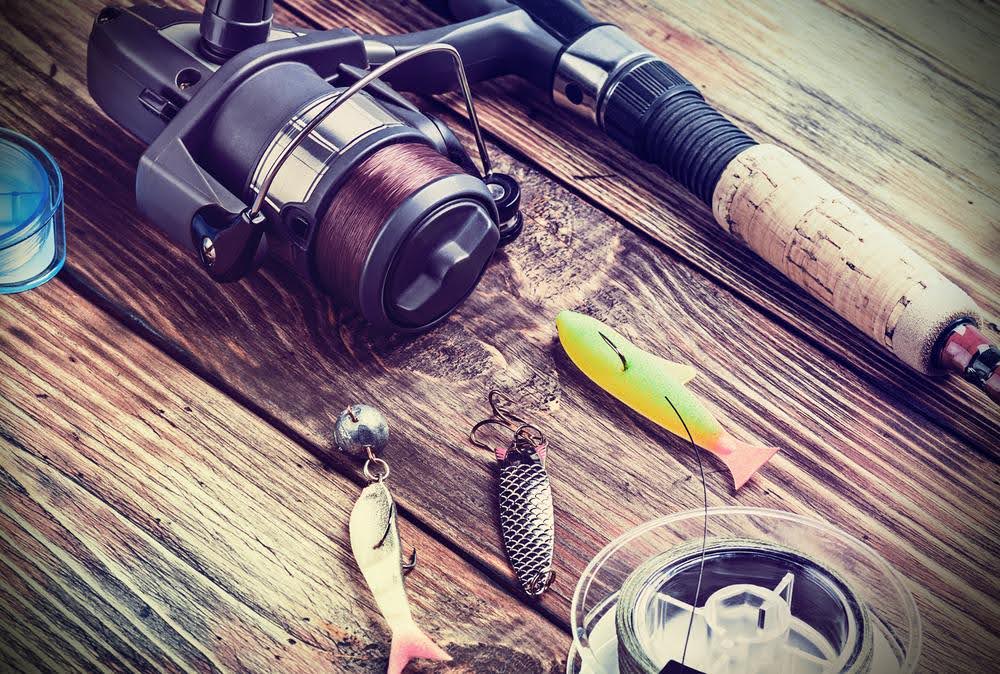
.png)
.png)